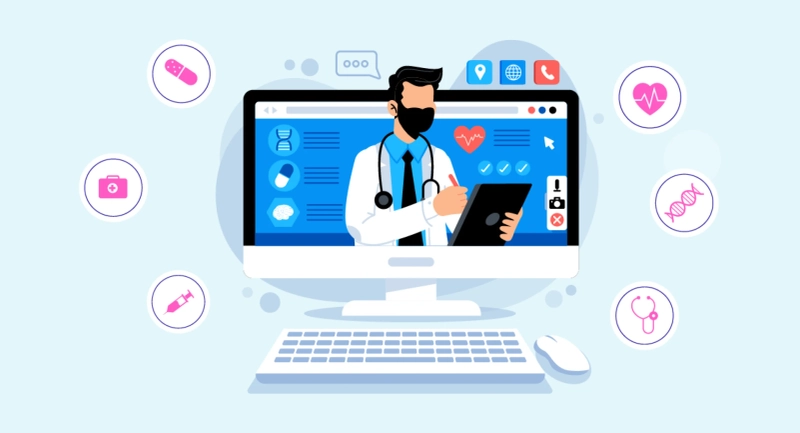Healthcare software development is critical to the industry\'s transformation, providing better patient care, faster workflows, and increased operational efficiency. We go into the major features of healthcare software development in this comprehensive tutorial, going beyond the basics to provide you with a deeper understanding of hospital management systems. We address critical factors for designing unique and impactful healthcare software solutions, that can improve from planning and requirements collecting to deployment and ongoing maintenance.
- Understanding Healthcare Software Development:
- Definition and scope of healthcare software development
- Overview of the software development life cycle (SDLC) in healthcare
- Roles of key stakeholders, including developers, healthcare professionals, and end-users
- Planning and Requirements Gathering:
- Identifying goals and objectives for the software project
- Conducting thorough needs analysis to understand user requirements
- Defining specifications and creating a comprehensive project roadmap
- Establishing realistic timelines and allocating necessary resources
- Designing Healthcare Software Solutions:
- User interface (UI) and user experience (UX) considerations for intuitive design
- Designing workflows and navigation that align with healthcare professionals\' needs
- Incorporating accessibility and usability standards for diverse user groups
- Collaborating closely with healthcare domain experts for tailored design solutions
- Development and Testing:
- Selecting the appropriate development methodology, such as agile or waterfall
- Coding and implementing software features with a focus on scalability and flexibility
- Rigorous quality assurance and testing processes to ensure reliability and functionality
- Addressing security and privacy concerns to protect sensitive patient data
- Integration and Interoperability:
- Seamlessly integrating the software with existing healthcare systems (EMR, EHR, etc.)
- Ensuring smooth data exchange and interoperability for efficient workflows
- Adhering to healthcare interoperability standards, such as HL7 and FHIR
- Deployment and Implementation:
- Planning for successful software deployment and rollout
- Comprehensive training and onboarding programs for healthcare professionals and end-users
- Change management strategies to navigate the transition effectively
- Ongoing monitoring and evaluation to assess system performance and user feedback
- Support and Maintenance:
- Establishing robust support mechanisms for prompt issue resolution
- Addressing software updates, bug fixes, and enhancements
- Continuous improvement strategies based on user feedback and evolving industry requirements
- Security and Compliance Considerations:
- Ensuring data security and privacy in compliance with regulations (e.g., HIPAA, GDPR)
- Implementing encryption, access controls, and secure authentication mechanisms
- Regular security audits and risk assessments to mitigate potential vulnerabilities
- Future Trends and Innovations:
- The Role of artificial intelligence (AI) and machine learning in healthcare software development
- Advancements in telemedicine and remote patient monitoring for expanded access to care
- Integration of Internet of Things (IoT) devices and wearable technologies for data-driven insights
- Predictive analytics and personalized medicine for tailored treatment plans
Conclusion
Healthcare software development continues to revolutionize the healthcare landscape, empowering providers to deliver exceptional patient care while improving operational efficiencies. By following the key considerations outlined in this ultimate guide, you can embark on a successful healthcare software development journey, ensuring the creation of impactful solutions that meet the evolving needs of the industry. Embrace the power of technology and shape the future of healthcare.



